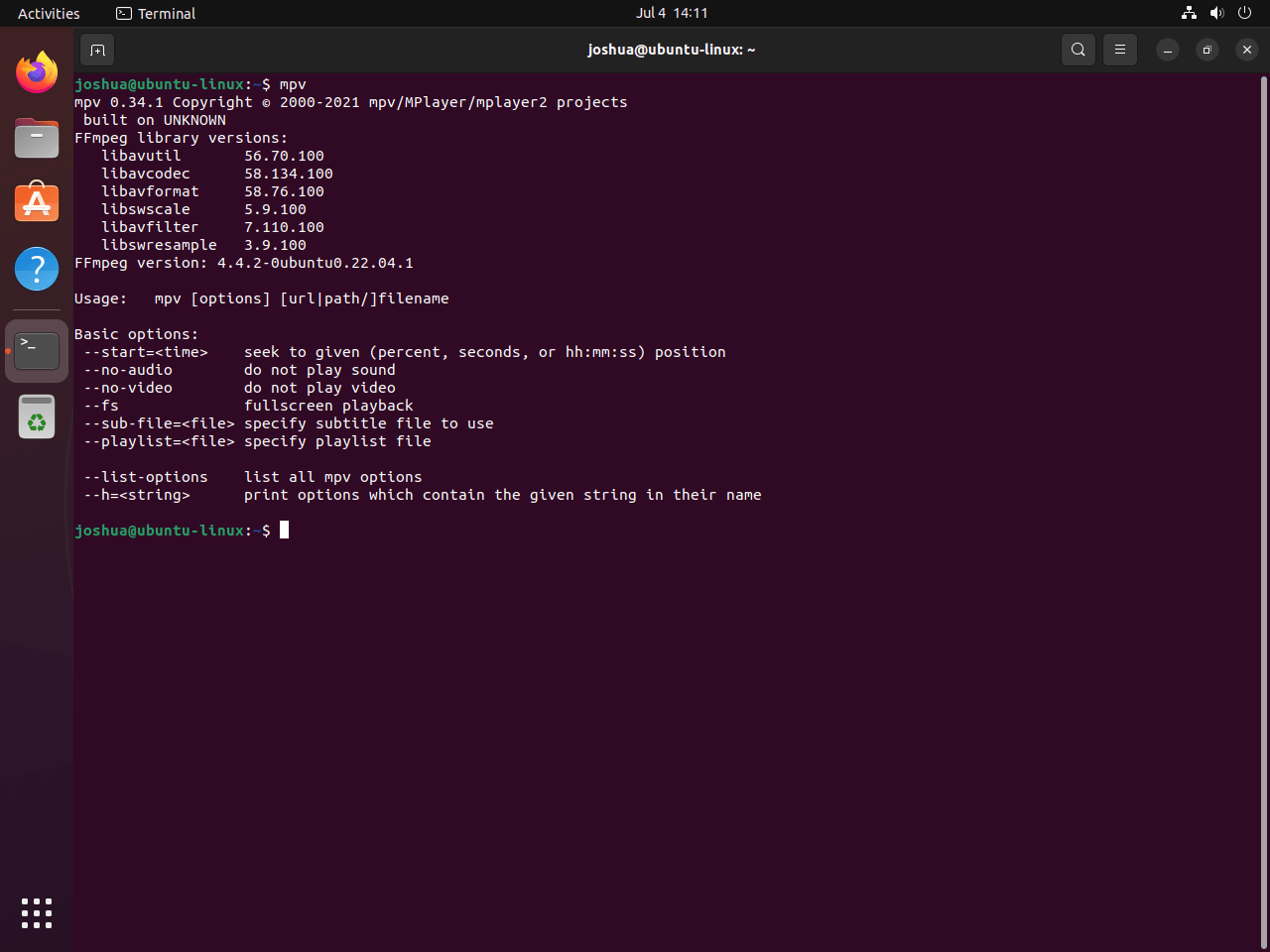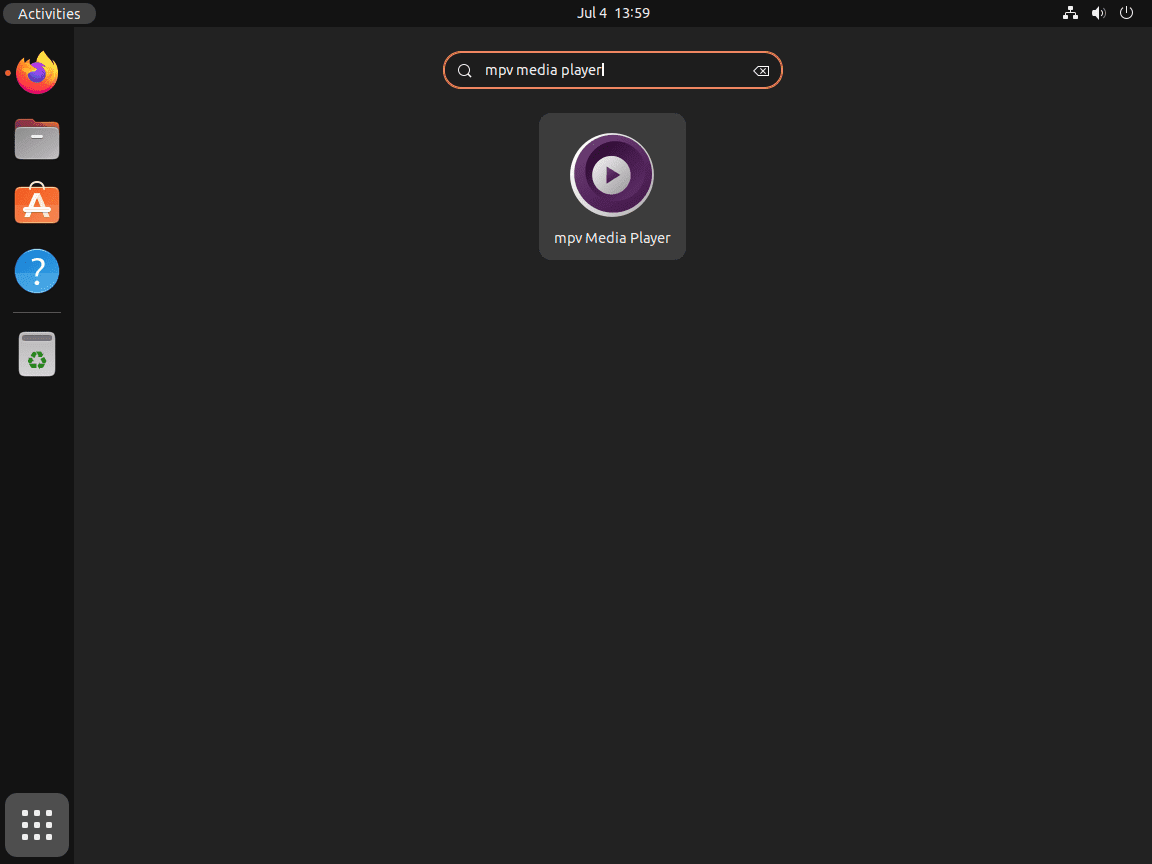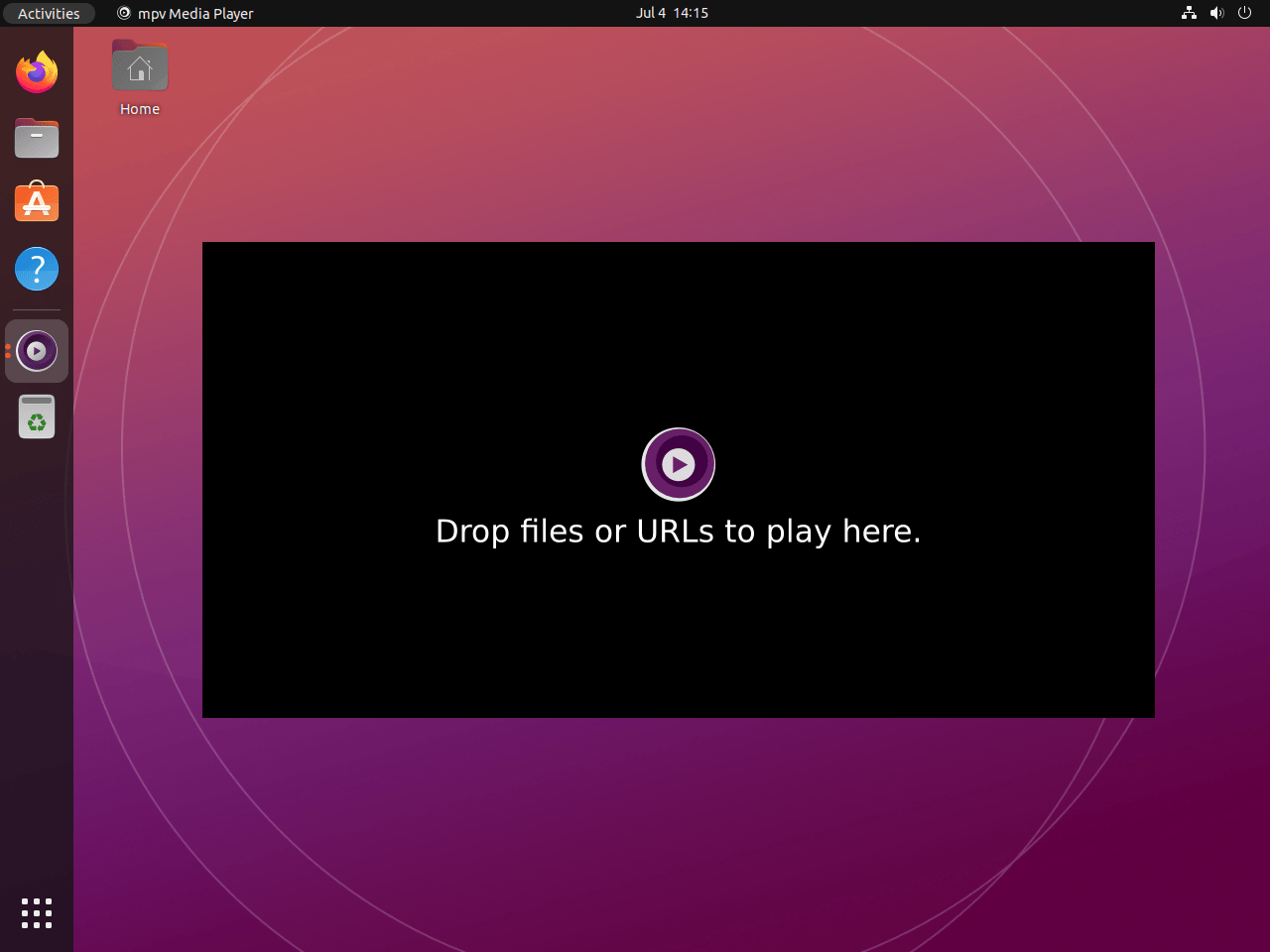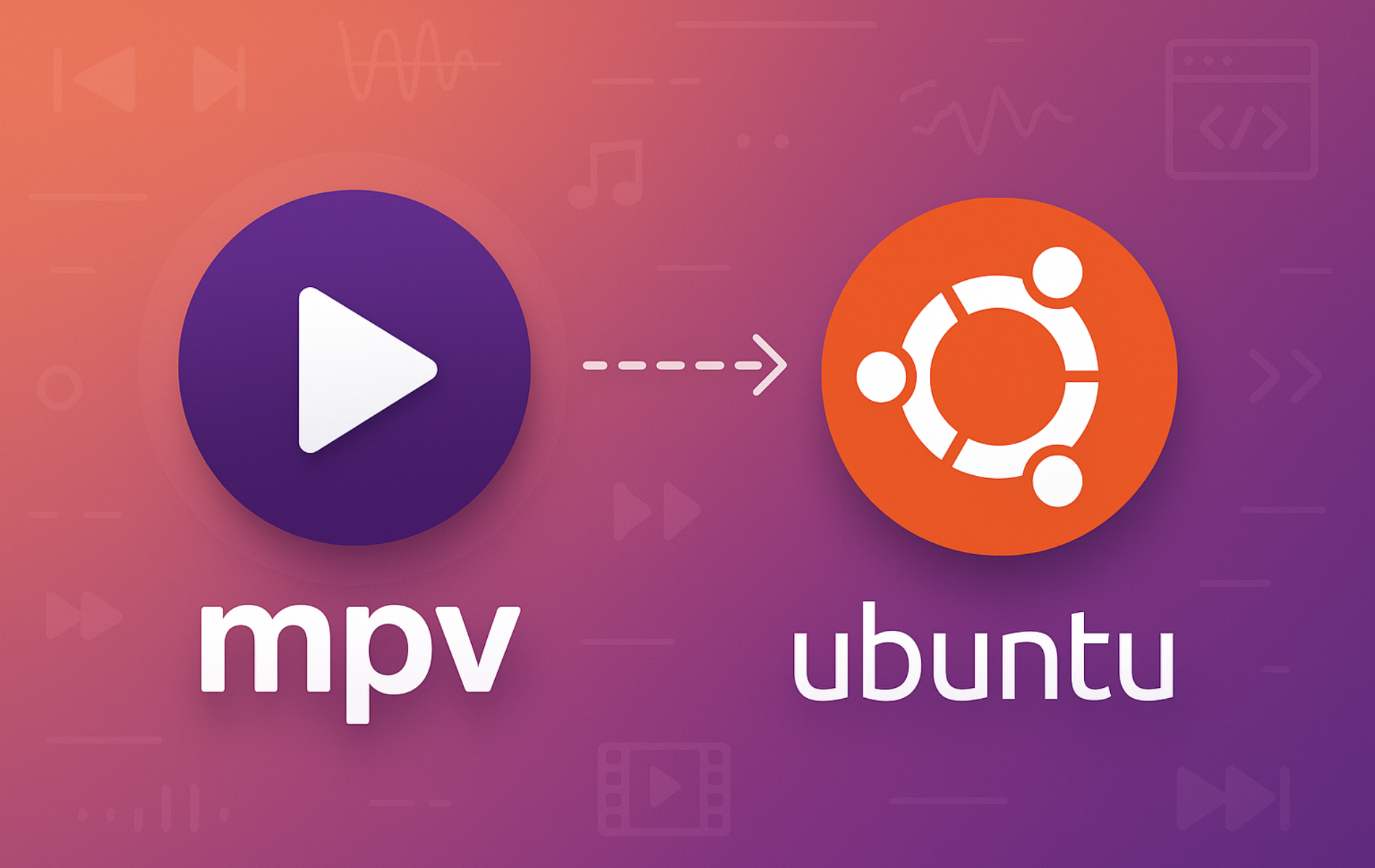The mpv media player provides lightweight, high-quality video and audio playback for Ubuntu users who want more control than traditional players offer. Whether you need to play local video files, stream content from URLs, automate media processing with scripts, or use keyboard-driven controls without a cluttered interface, mpv handles these tasks efficiently. By the end of this guide, you will have mpv installed and verified on your Ubuntu system, ready for playback and customization through its powerful configuration options.
Choose Your mpv Installation Method
Ubuntu offers two main installation paths for mpv, each with different trade-offs between version freshness and system integration.
| Method | Channel | Version | Updates | Best For |
|---|---|---|---|---|
| APT Package Manager | Ubuntu Repos | Distribution default | Automatic via apt upgrade | Most users who prefer distro-tested packages |
| Flatpak | Flathub | Latest stable | Automatic via flatpak update | Users who want newer releases with sandboxing |
For most users, the APT method is recommended because it integrates seamlessly with Ubuntu’s package management and receives security updates automatically. Choose Flatpak if you specifically need the latest mpv features or prefer application sandboxing.
This guide supports Ubuntu 22.04 LTS and 24.04 LTS installations. Both installation methods work identically on all supported LTS releases, while Flatpak remains compatible across all Ubuntu versions.
Method 1: Install MPV Media Player via APT
Update Ubuntu System Packages Before MPV Installation
Before installing MPV, ensuring your system packages are up-to-date is prudent. Keeping the system updated minimizes the chances of encountering compatibility issues or conflicts with existing libraries.
Run the following command in the terminal to update the package lists and upgrade the system:
sudo apt update && sudo apt upgradeInstall MPV via APT Command
Now, with the system updated, execute the command below in your terminal to install MPV:
sudo apt install mpvOnce the installation completes, verify that mpv is accessible by checking its version:
mpv --versionmpv 0.37.0 Copyright © 2000-2024 mpv/MPlayer/mplayer2 projects built on UNKNOWN
If you prefer to use the latest version of mpv with newer features, consider the Flatpak installation method covered in Method 2 below.
Method 2: Install MPV via Flatpak and Flathub
Flatpak provides an alternative installation method that delivers the latest mpv releases in a sandboxed environment. This approach is ideal if you want newer features than the Ubuntu repository offers, or if you prefer application isolation for security.
If Flatpak is not installed on your system, follow our Flatpak installation guide for Ubuntu to set up the framework and add the Flathub repository.
Enable Flathub Repository for MPV
Before installing MPV, you must ensure the Flathub repository is enabled on your system. This repository contains an extensive collection of applications packaged in the Flatpak format, and Enabling Flathub is crucial for accessing and managing these packages.
To enable Flathub on your Ubuntu system, execute the following command in the terminal:
sudo flatpak remote-add --if-not-exists flathub https://flathub.org/repo/flathub.flatpakrepoThis command verifies if Flathub is in your system’s list of repositories and adds it if it’s not already present.
Install MPV via Flatpak Command
Now that the Flathub repository is enabled, we can install MPV. Flatpak commands facilitate installing, updating, and removing Flatpak packages.
Run the following command in the terminal to install MPV:
flatpak install flathub io.mpv.Mpv -yThe command tells Flatpak to fetch and install the mpv package from the Flathub repository. The -y flag automatically confirms installation prompts, which is useful for scripted deployments but means you will not see the package list before installation proceeds.
After installation completes, verify that mpv is accessible through Flatpak:
flatpak info io.mpv.Mpv ID: io.mpv.Mpv
Ref: app/io.mpv.Mpv/x86_64/stable
Arch: x86_64
Branch: stable
Origin: flathub
Installation: system
Launch mpv Media Player
With mpv installed, you can launch it using several methods depending on your preference for terminal commands or graphical navigation.
Launch mpv from Terminal
For users who prefer keyboard-driven control, mpv works exceptionally well from the terminal. The basic syntax accepts optional flags followed by a file path or URL:
To launch MPV from the terminal, use the command:
mpv [options] [url|path/]filenameIn the above command, replace [options] with any additional parameters you want to use, and [url|path/]filename with the file or stream you wish to play.
To view the extensive list of options that can be used with the MPV command, enter the following command:
mpv --list-optionsThis command displays all available options along with their descriptions, giving you greater customization possibilities for using the MPV Media Player.

Launch mpv from Flatpak Installation
For those who installed MPV using Flatpak, a different command is needed to launch the media player from the terminal:
flatpak run io.mpv.MpvThis command specifically tells Flatpak to run the MPV Media Player.
Launch mpv from Applications Menu
Alternatively, you can launch mpv directly from Ubuntu’s graphical desktop environment without using the terminal.
Navigate to the MPV Media Player by following this path:
Activities > Show Applications > MPV Media PlayerThe following screenshots show the mpv application icon in Ubuntu’s application menu and the player interface once launched:


Managing MPV Media Player
Update MPV Media Player
It is important to stay up-to-date with the latest versions. The steps to update the MPV Media Player differ depending on whether you installed it using APT or Flatpak.
Update mpv via APT
If you used APT to install mpv, you can update it alongside other system packages by running:
sudo apt update && sudo apt upgradeThe first command updates the package list, and the second upgrades all the outdated software, including MPV.
Update mpv via Flatpak
If you used Flatpak for installation, the update process is slightly different. Input the following command in the terminal:
flatpak updateThis command updates all installed Flatpak applications, including mpv, to their latest available versions from Flathub.
Remove mpv Media Player
If you no longer need mpv on your system, you can remove it using the commands matching your installation method.
Remove mpv via APT
If MPV was installed via APT, use the following commands in the terminal for uninstallation:
sudo apt remove mpv
sudo apt autoremoveThe autoremove command cleans up any orphaned dependencies that were installed alongside mpv but are no longer needed by other packages.
Remove mpv via Flatpak
For those who have installed MPV through Flatpak, the command to uninstall it is:
flatpak uninstall --delete-data io.mpv.MpvThe --delete-data flag removes mpv along with its configuration files stored in the Flatpak data directory. After removal, run flatpak uninstall --unused to clean up any unused runtimes.
Conclusion
You now have mpv media player installed and verified on your Ubuntu system, with the ability to play media files from the terminal or applications menu. To further customize your experience, explore mpv’s configuration file at ~/.config/mpv/mpv.conf where you can set default options for video output, audio, and keyboard bindings. For streaming content, combine mpv with yt-dlp to play online videos directly without opening a browser.


